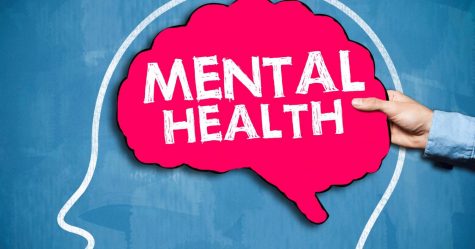Mental Health: Seek the Help You Need
February 2, 2019
Mental health disorders are problems that are becoming more prevalent over time. For everyone in five students, one will have some type of mental illness. Therefore, if you teach or participate in a classroom with 25 students, five of those students are struggling with some type of mental disorder. With, what can the school do in order to provide help to those that are struggling? How can the school make students more aware of the mental health programs that are in place?
As of right now, there are already programs in place for students to utilize for when they feel upset or are struggling with some type of issue, whether it is school related or not school related. I am going to be strictly focusing on the guidance office and the SAP program. The guidance office allows students to walk into their office at any time if they need to talk about anything that is upsetting the student. There is also the Student Assistance Program (SAP) which is a program that help students overcome addictions to drugs and/or alcohol, as well as helping those who are in a crisis at home or have a crisis within themselves. A teacher, friend, or the victim can all refer another student to the SAP program. These programs sound great, right? However, when I talked to senior Mary Kate Levush, she informed me that she had not heard of the SAP program, nor knew that the guidance counselors allowed anyone to walk in and be helped at any given time.
“The thing is, only SAP team members’ students know of the program”, commented Mrs. Nash. There is a handful of teachers who are a part of the SAP program and they try to get their program utilized and understood so more students can get help. “We could even run something on the daily ramble”, she added.
One of the issues in place that I gathered from all three of my sources is the fact that there is some type of stigma with these programs. While talking to senior guidance counselor Mrs. O’Sullivan, she mentioned that when she calls down students to her office, they automatically think that they’re in trouble.
Naturally, the next question is where do we go from here? Let’s tackle the issue of the stigma and make these programs more welcoming for students. More importantly, let’s advertise these programs and make them aware to all students for their own benefit. Let’s create announcements on the daily ramble, have more teachers talk about these programs, and let’s have students and teachers look out for other students and give them the help they may need. Mary Kate also mentioned that she was a fan of the speakers that came into the school to talk about their mental health issues because “hearing from someone who went through it is real and makes the issue real, too”.
If there is one thing to take away from this article, it is to never be scared to speak up or to get help. There are people who truly want to help and care about your well-being. If you see someone you know who is struggling, encourage them to go to a guidance counselor or you can refer them to the SAP program. The source of the referral is made anonymous and is kept in confidence. Let’s spread mental health awareness throughout the school and make a positive impact on students one by one.
